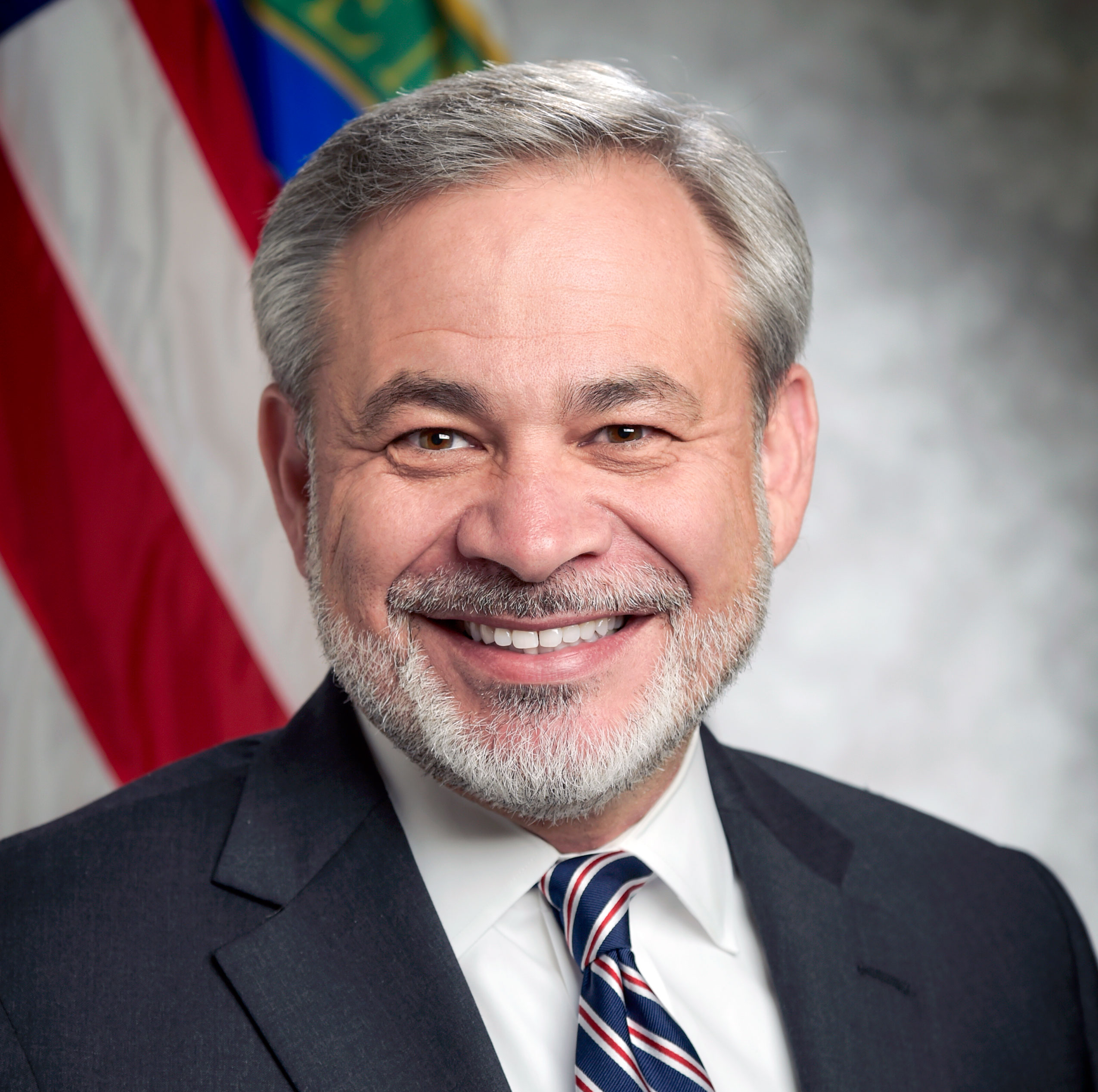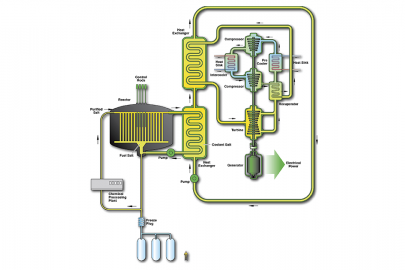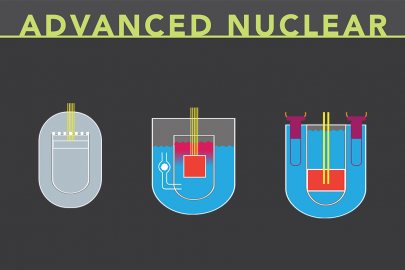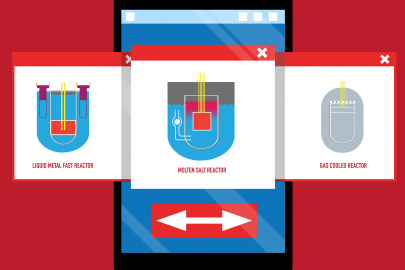Having a fast test reactor will drastically speed up the time it takes to test, develop and qualify advanced reactor technologies.
March 1, 2019
There’s a growing interest in advanced nuclear energy.
Private companies have already invested more than $1 billion in new reactor designs that will be smaller, more affordable, highly flexible and extremely safe. So safe, in fact, that in the event of a problem, human intervention is not necessary.
More than 40 U.S. companies are already working on these incredible reactor designs that could help power our homes, provide clean water, and decarbonize energy-intensive industries.
There’s just one problem …
The United States doesn’t have a facility to effectively test and qualify the materials needed to develop some of these advanced reactors.
That’s why it is imperative that the U.S. Department of Energy moves forward with its plans to build a versatile test reactor, or VTR.
What is a Versatile Test Reactor?
VTR, tightly coupled with the rest of our research infrastructure, will be the state-of-the-art science and technology lab for advanced nuclear energy.
It will feature a sodium-cooled fast reactor that uses high energy neutrons to test and develop advanced reactor fuels and materials.
Fast reactors use fast-moving neutrons to operate at higher temperatures and lower pressures. They can be cooled by molten salt, liquid metal, or helium gas.
This leads to inherent safety features, higher operating efficiencies and less waste.
Why Do We Need VTR?
Many of the advanced reactor designs that will likely produce power in the future will be fast reactors.
Because these designs use high energy neutrons, they interact differently with the materials they come in contact with.
Unfortunately, U.S. developers are limited in the amount of data they can use to properly characterize these materials.
That’s because America hasn’t operated a fast test reactor in more than two decades.
VTR eliminates this research gap and would drastically speed up the time it takes to test, develop and qualify advanced reactor technologies.
It would also be pivotal in creating new fuels, materials, instrumentation and sensors that could position the U.S. as a global leader in advanced nuclear technology.
These innovations could drastically extend lifetime reactor cores, boost fuel performance and even accelerate fusion research.
Putting America First
Advanced nuclear will be developed with or without the United States.
If we don’t build this capability, U.S. companies will have no choice but to rely on foreign countries like Russia and China to develop their technologies.
This would be a missed opportunity for our nation to modernize its nuclear research infrastructure and export new technologies that could re-energize the nuclear industry.
Regaining global leadership in this emerging technology space is also essential in protecting our interests, along with our allies, when it comes to nuclear safety, security and non-proliferation.
What’s Next?
DOE will now move forward with its conceptual design of the reactor, which could be completed as early as 2026 at the site of one our national labs.
Dan Brouillette
Dan Brouillette, Former Secretary of the U.S. Department of Energy

Dan Brouillette served as the 15th Secretary of the U.S. Department of Energy. Secretary Brouillette has three decades of experience in both the public and private sector. Most recently he was the Deputy Secretary of Energy.
He also served as the Senior Vice President and head of public policy for USAA, the Nation’s leading provider of financial services to the military community. Before joining USAA, Secretary Brouillette was a Vice President of Ford Motor Company, where he led the automaker’s domestic policy teams and served on its North American Operating Committee.
At Ford and USAA, he was part of senior management teams that helped bring to market innovative technologies like auto collision avoidance and remote deposit capture, a technology invented by USAA that allows the use of smart devices to deposit funds into our banking accounts.
Before his transition into the private sector, Secretary Brouillette held numerous positions in government. He was Chief of Staff to the U.S. House of Representatives Committee on Energy and Commerce, which has broad jurisdictional and oversight authority over five Cabinet-level Federal agencies. He also served as Assistant Secretary of Energy for Congressional and Intergovernmental Affairs from 2001 to 2003. In addition, he is a former state energy regulator, having served as a member of the Louisiana State Mineral and Energy Board from 2013 to 2016.
Secretary Brouillette and his wife, Adrienne, are both U.S. Army veterans and have been married for 28 years. They hail from San Antonio, TX, and have nine children.





